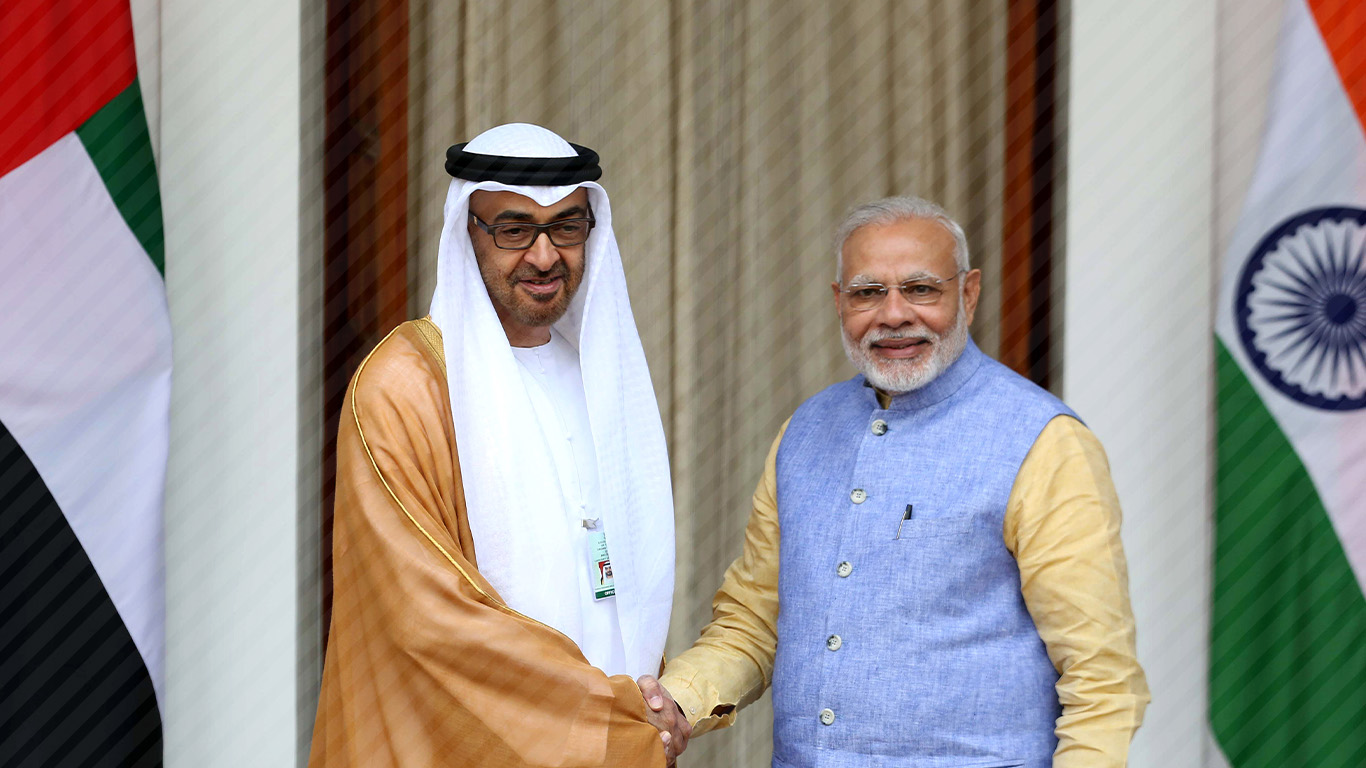The geographic concept of the Indo-Pacific, spanning the Indian Ocean and the Pacific Ocean, has now become a new policy of India’s power projection through its military cooperation with the US, Japan and Australia to check China’s influence. In 2018, the US Pacific Command became the Indo-Pacific Command. India has been strategically positioning itself in relation to the countries in this vast region. The country has decided to increase the area covered by its Indo-Pacific outreach and has now come to include the Western Indian Ocean and the Arabian Sea. The most important aspect of India’s new Indo-Pacific policy is that it is now moving beyond economic, cultural and historical linkages to these countries to include an overarching strategic imperative, which indicates that India is gradually evolving this new foreign policy concept into a projection of hard power.
India has maintained good relations with all six Gulf monarchies. In the last few years, India’s relations with Saudi Arabia, the United Arab Emirates (UAE) and Bahrain have exponentially increased. India has also historically maintained good relations with Oman, Kuwait and Qatar. The country has been seeking maximum benefits from the energy-rich Gulf region, not only in the field of business and trade, expat remittances and continual energy supply, but long-term strategic interests. India also aims to check the penetration of new players in Gulf Cooperation Council (GCC) countries.
GCC and Indo-Pacific
The new concept of the Indo-Pacific is moving beyond economic, cultural and historical linkages to include a primary strategic imperative, which shows India gradually evolving the new foreign policy concept into an approach of hard power.
The GCC as a bloc is India’s largest trading partner. In the 12-month period from March 2018 to April 2019, bilateral trade touched $121.25 billion. India’s imports from the Gulf countries reached $79.70 billion compared to $41.55 billion worth of exports from India to the Gulf region. The GCC countries account for 15 per cent of India’s total imports and 12 per cent of the country’s total exports in value terms. The UAE accounted for the major chunk of India’s exports and imports with $30.08 billion and $29.77 billion respectively for the fiscal year 2019. GCC countries account for more than 54 per cent of the annual $83 billion foreign remittance to India in 2019.
It is widely believed that India started securing strategic interests in the Middle East in 2001 followed by India and Saudi Arabia signing the Delhi Declaration in 2006. The Narendra Modi government in the last six years has strengthened the strategic relationship which was initiated by the previous Manmohan Singh government.
The Saudis have realised that new energy sources such as shale oil and supplies from places like Iraq, Kurdistan Regional Government, Russia and the United States have reduced global energy reliance on the Gulf region. The US is focusing more on containing China’s growing economic stature and Russia’s military resurgence. On the other hand, lower revenues due to sustained low oil prices have made it imperative for Saudi Arabia to diversify its rentier economy and address its security needs in the new emerging global setting.
Changing Dynamics within GCC
Moving away from the decades-old one-dimension policy of aligning with the US-led Western camp, Gulf countries are looking at a multi-dimensional foreign policy and spreading their security umbrella. Increasing bonhomie between some Gulf countries and India can also be seen in this context as well as the GCC’s growing contacts with Russia and China.
The GCC is full of foreign military bases. The US has military bases in every GCC country while the UK has military bases in Qatar, Bahrain and Oman. France has a large military base in the UAE. The US recently announced relocation of 3,000 troops to Saudi Arabia after the Aramco oil facility came under a drone attack. Turkey has broken the jinx and became first regional power after establishing its military base in Qatar. There is a realisation in Gulf countries that aligning exclusively with the declining super power is not a smart strategy and new partners may be needed.
The Saudis and Emiratis are willing to welcome India’s military presence in the Gulf region to expand their security net. Recent moves by Saudi Arabia and other Gulf countries to grow their relations with Russia and China are also significant. The Indian navy already uses Oman’s strategically located Duqm port for berthing and refuelling.
Qatar and Kuwait are seen inclined towards Turkey for further security guarantees outside the US-led Western bloc.
India’s policy of stretching the geographical and consequently the strategic area of the Indo-Pacific to encompass the Arab Gulf region will be challenged by Pakistan and its strategic partner China. The commercial port of Gwadar has all the traits of becoming a joint naval base of the two countries to keep an eye on Indian movements in the Arabian Sea.
Constraints on the Indo-Pacific in the Arabian Gulf
In the past, India showed unwillingness to risk damaging its core interests in the region by seeking a visibly active or security role. Nonetheless, a key challenge for India in relation to the Gulf will be to maintain its relationship with Iran amidst heightening tensions in the Gulf region. India has traditionally maintained friendly relations with Iran to balance the regional rivals. In addition, India also hosts a substantial Shiite Muslim minority. In the recent past, at Washington’s directive, India stopped oil imports from Iran, the second largest supplier after Saudi Arabia. Reports of India’s ouster from the Chabahar port to the Zahedan railway line and Iran’s massive $400 billion deal with China have posed a huge strategic challenge for India.
Pakistan’s refusal to take part in the 2019 Kuala Lumpur Summit at the last moment, despite the summit having initially been reportedly conceived by Imran Khan, Turkish President Erdogan and Malaysian Prime Minister Mahathir Mohamed, reportedly under Saudi-UAE pressure, cleared the doubts of many about Saudi influence on Pakistan’s foreign policy. This move had overcame many past issues where Saudis felt betrayed by Pakistan, such as Pakistan’s position on Iran, its neutrality on Qatar, its refusal to fight alongside the Arab coalition in Yemen and most recently its support to Turkish military operations in north-eastern Syria.
Unlike Russia, China and now Turkey, the sluggish military industrial complex of India is not in a position to supply sophisticated weaponry to the Gulf states and that puts India, more or less, in the same class as Pakistan. It can provide military training and trained military personnel but not much in terms of advanced technology.
If India expands into the Gulf region, Pakistan is certain to counter it with its own initiatives at a time when the role of the US is gradually receding in the region. Pakistan would also not want a reduced security role in the GCC at India’s behest.
India’s traditional ally Russia has already shown its dissent on the doctrine of the Indo-Pacific. At a conference in Delhi, Russian Foreign Minister Sergei Lavarov said, “When we asked the initiators how Indo-Pacific is different from Asia-Pacific, we were told it is more democratic. We don’t think so. It is rather tricky. We have to be careful about the terminology which looks benign but is not.”
China’s recent aggressive military posturing on its border dispute with India emerged as a first major challenge for the Indo-Pacific doctrine which was believed to be America’s priority theatre. The response from Iran, another traditional ally of India, will be noteworthy in the Gulf-side of the Indo-Pacific. Iran would not like India’s deepening security ties with the GCC as it would provide an additional security cover to Iran’s arch-enemy Saudi Arabia.


 Mohammad Pervez Bilgrami
Mohammad Pervez Bilgrami